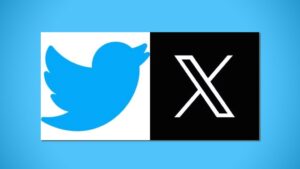|
Getting your Trinity Audio player ready...
|

YouTube has revolutionized the way businesses connect with their audience. With over 2 billion logged-in monthly users, YouTube offers an unparalleled platform for marketers to showcase their products, engage with their target audience, and drive conversions. In this comprehensive guide, we’ll delve into the world of YouTube marketing, explore the benefits of YouTube ads, and uncover 15 invaluable techniques and tips for maximizing your YouTube marketing strategy.
Understanding YouTube Marketing
YouTube marketing encompasses various strategies aimed at promoting products, services, or brands through the YouTube platform. Whether it’s creating compelling content, leveraging YouTube ads, or engaging with your audience through comments and live streams, YouTube offers a plethora of opportunities for businesses to reach their target audience effectively.
Benefits of YouTube Marketing
- Vast Reach: With billions of users worldwide, YouTube provides unparalleled reach, allowing businesses to connect with audiences across the globe.
- Visual Engagement: Video content is inherently engaging, capturing viewers’ attention and facilitating better retention of information compared to text-based content.
- SEO Benefits: YouTube is owned by Google, and videos often appear in search engine results pages (SERPs), enhancing your online visibility and driving organic traffic to your website.
- Audience Targeting: YouTube’s robust targeting options enable advertisers to reach specific demographics, interests, and behaviours, ensuring their ads are seen by the right audience.
- Cost-Effective Advertising: YouTube ads offer various pricing models, including cost-per-view (CPV) and cost-per-click (CPC), allowing businesses to optimize their advertising budget for maximum ROI.
YouTube Ads
YouTube ads are an integral component of YouTube marketing strategies, offering businesses the opportunity to reach their target audience through targeted, engaging video content. There are several types of YouTube ads, including:
- TrueView Ads: TrueView ads allow viewers to skip the ad after five seconds, ensuring that advertisers only pay when viewers choose to watch the entire ad.
- Bumper Ads: Bumper ads are short, non-skippable ads that appear before, during, or after a video and are limited to six seconds in length.
- Display Ads: Display ads appear alongside YouTube videos and can include banners, overlays, and sponsored cards, providing additional visibility for advertisers.
- Overlay Ads: Overlay ads are semi-transparent ads that appear on the lower portion of a video, allowing advertisers to promote their products or services without interrupting the viewing experience.
- Sponsored Cards: Sponsored cards display content relevant to the video, such as products or related videos, encouraging viewers to engage further with the advertiser’s content.
15 Invaluable YouTube Marketing Techniques and Tips
- Create High-Quality Content: The foundation of a successful YouTube marketing strategy is compelling, high-quality content that resonates with your target audience.
Example: Blendtec’s “Will It Blend?” series showcases the power of their blenders by blending unconventional items like iPhones and golf balls, garnering millions of views and increasing brand visibility.
- Optimize Video Titles and Descriptions: Use relevant keywords in your video titles and descriptions to improve discoverability and attract organic traffic.
Example: Tasty’s recipe videos include descriptive titles like “One-Pot Creamy Garlic Chicken Pasta” and detailed descriptions with ingredient lists and cooking instructions, catering to users searching for specific recipes.
- Leverage Custom Thumbnails: Custom thumbnails grab viewers’ attention and entice them to click on your videos, increasing engagement and click-through rates.
Example: Tech YouTuber Marques Brownlee (MKBHD) uses custom thumbnails with bold colours, clear imagery, and minimal text to highlight key points and attract viewers to his tech reviews.
- Engage with Your Audience: Respond to comments, answer questions, and foster a sense of community to build rapport with your audience and encourage repeat engagement.
Example: Beauty influencer James Charles actively engages with his audience by responding to comments, hosting Q&A sessions, and featuring fan artwork in his videos, fostering a loyal and engaged fanbase.
- Collaborate with Influencers: Partnering with influencers in your niche can help expand your reach, increase credibility, and attract new subscribers to your channel.
Example: Gymshark collaborates with fitness influencers like Whitney Simmons and Steve Cook to create workout videos, promote their activewear, and reach a broader audience of fitness enthusiasts.
- Utilize End Screens and Cards: End screens and cards allow you to promote other videos, playlists, or external links, keeping viewers engaged and directing them to relevant content or actions.
Example: Educational channel TED-Ed uses end screens to promote related videos and encourage viewers to subscribe, increasing viewer retention and channel growth.
- Incorporate Calls to Action (CTAs): Encourage viewers to take action, such as subscribing to your channel, liking the video, or visiting your website, by including clear CTAs throughout your videos.
Example: Lifestyle vlogger Zoella prompts viewers to “subscribe for weekly videos” and “click the bell icon to receive notifications,” driving subscriber growth and engagement.
- Analyze Performance Metrics: Regularly monitor key performance metrics, such as watch time, audience retention, and click-through rates, to identify trends, optimize content, and refine your YouTube marketing strategy.
Example: YouTube Analytics provides insights into video performance, audience demographics, and traffic sources, empowering creators to make data-driven decisions and maximize their reach and impact.
- Experiment with Different Content Formats: Diversify your content strategy by experimenting with different formats, such as tutorials, vlogs, product reviews, or behind-the-scenes footage, to cater to diverse audience preferences.
Example: GoPro showcases user-generated content (UGC) featuring extreme sports, travel adventures, and outdoor activities, highlighting the versatility and durability of their action cameras.
- Schedule Regular Uploads: Consistency is key to building an engaged audience and maintaining momentum on YouTube. Establish a regular upload schedule and stick to it to keep your subscribers informed and coming back for more.
Example: Tech reviewer Linus Tech Tips uploads multiple videos per week, covering the latest gadgets, PC builds, and tech tutorials, ensuring a steady stream of content for his dedicated audience.
- Optimize for Mobile Viewing: With the increasing prevalence of mobile devices, optimize your videos for mobile viewing by using clear visuals, legible text, and vertical formats where applicable.
Example: BuzzFeed’s Tasty produces short recipe videos optimized for mobile viewing, with concise instructions, eye-catching visuals, and easy-to-follow recipes tailored for social media platforms like Instagram and Facebook.
- Promote Your Videos Across Channels: Extend the reach of your videos by promoting them across various channels, including social media, email newsletters, blogs, and partner websites.
Example: Red Bull shares action-packed videos featuring extreme sports, stunts, and events across its social media channels, leveraging its large following to amplify reach and engagement.
- Stay Up-to-Date with Trends: Monitor industry trends, viral content, and popular hashtags to capitalize on relevant topics and maximize your video’s visibility and shareability.
Example: Fashion retailer Fashion Nova creates trendy lookbook videos featuring popular styles, celebrity-inspired outfits, and seasonal trends, capitalizing on current fashion trends to attract viewers and drive sales.
- Use YouTube Analytics to Identify Opportunities: Leverage YouTube Analytics to identify top-performing videos, audience demographics, and traffic sources, allowing you to replicate success and optimize your content strategy.
Example: Educational channel CrashCourse analyzes viewer engagement and feedback to identify topics of interest and tailor content to meet audience needs
To conclude, mastering YouTube marketing requires a multifaceted approach that combines compelling content creation, strategic advertising, and continuous optimization. By harnessing the power of YouTube ads and implementing the 15 invaluable techniques and tips outlined in this guide, businesses can unlock the full potential of the platform to reach, engage, and convert their target audience effectively. From creating high-quality content to leveraging analytics for informed decision-making, each strategy plays a crucial role in building a successful YouTube marketing strategy. As YouTube continues to evolve and innovate, staying adaptable and responsive to emerging trends and audience preferences will be key to maintaining a competitive edge in the digital landscape. Embrace the opportunities that YouTube marketing presents, and embark on a journey to elevate your brand’s presence and drive sustainable growth in the ever-expanding realm of online video.




